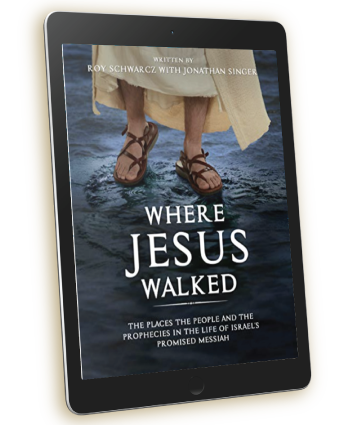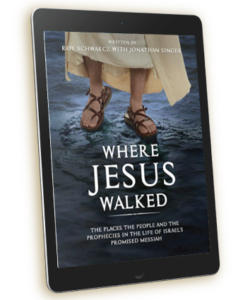Rule 1 – Nothing is to be taken in the Book of Revelation such as a figure of speech unless it is clearly marked as a figure of speech or known as a figure of speech in other parts of the Bible. This corresponds to our first principle.
This means that God expects us to understand what is written in this Book. For example the seven stars which is a figure of speech in Revelation 1:16 are revealed in the chapter to be the seven angels of the seven churches in Revelation 1:20. The same is true of the seven golden lamp stands which in the same verse is interpreted as a picture of the seven churches.
So in Revelation 1 we are told that the angels and the lamp stands are figures of speech. In comparison we read of “seven thunders” in Revelation 10:4. John understood the meaning of what was said because he was told not to reveal it. But that which is to be revealed should be able to be understood by the reader of the letter otherwise what would be the point in revealing anything in this letter to the church. Daniel was told not to reveal certain things in his prophecy in Daniel 12:4 and Paul also was told not to reveal certain things as well in 2 Corinthians 12:2-3. But the rest was to be revealed.
As we begin our study in Revelation 1:1 we see clearly that this letter is a call to John to write so that God’s servants will know what will soon take place. In Revelation 1:3 we see again that we are to know and understand and obey what is written. In the last chapter of Revelation 22:6 we are told again that the purpose of this book is that God’s servants might know what is to take place.
In the 10th verse we are specifically told that this book is not to be a sealed book. In Mark 1:10 we have a figure of speech in an historical section of Scripture, the Spirit of God descending like a dove. We see another illustration of this in Act 2:10 and we know that this is not literally but a figure of speech by the modifier “like”. These are the rules concerning figures of speech.
Rule 2 – Temporal sequences are shown, this is dealing with time concerning events.
Rule 3 – Whether the action is in heaven or on the earth is clearly shown. This rule deals with where this action takes place.
Rule 4 – The rule of the parenthesis that the action starts at this point and then goes on. This is a literary usage in the book of Revelation and there are three of these in the Book of Revelation.
Revelation 1:1 – The Revelation – The word “revelation” means literally an unveiling, a disclosure of previously hidden things. We are given in this Book insight into events that will take place in the future. Many feel that this book is obscure and a mystery but in fact it is quite the opposite, its purpose is to reveal mysteries.
This is the closing chapter of God’s Book of Truth and His manual for our lives. It gives us insight in how God’s creation will lead to the eternal realm. This book warns the church of sin in her midst and calls her to be holy. It reveals the glory and majesty of God and displays the worship that is before His throne. It reveals the final political setup of the world, the work of Antichrist, and the Battle of Armageddon.
It reveals the coming glory of Messiah’s earthly reign during the millennial kingdom, the Great White Throne judgment, and the new heaven and the new earth. It reveals the victory of Jesus over all human and demonic opposition. It describes the ultimate defeat of Satan and sin, and the final state of the wicked (eternal torment in hell) and the righteous (eternal joy in heaven). In reveals the majesty and glory of the Lord Jesus Christ and it describes in detail the events of His second coming.
This revelation was given to Jesus from the Father, who sent it by His angel who then revealed it to John. Revelation is the result of the work of Jesus described by Paul in Philippians 2:5-11, where he describes the kenosis, “the emptying” of Jesus when he took upon flesh and the reward of the Father to the Son for His obedience. Revelation1:1 also tells us that this book was written to his servants, which literally is the word “bond servants”.
Bond Servants were willing slaves who gave themselves willingly to their master instead of leaving to be free to serve oneself Exodus 21:5-6. It is the acknowledgement that we have been purchased or bought with a price. One of the reasons that unbelievers have trouble understanding the Bible and especially the Book of Revelation is that it is not really addressed to them, but rather to believers. If Believers are having a hard time with this book it may also be that they are not really bond servants but instead serving themselves.
We are told that the events recorded here will soon take place, causing some to believe that since this letter was written 2,000 years ago the events must have already taken place and so will use that as an argument for the preterist view.
The word that is translated shortly is used twice in Revelation, once in Revelation 1:1 and once in Revelation 22:6, in essence this gives the idea that everything that is spoken of between those two uses must shortly take place.
This includes letters addressed to churches that existed two thousand years ago (Revelation 2–3), as well as clear descriptions of Yeshua’s physical return to this earth (Revelation 1:7;19:19-27), and the prediction of His reign on earth for one thousand years (Revelation 20:4). So we need to understand that the events are imminent and not necessarily immediate. We have no way of knowing just when in God’s reckoning ‘ shortly’ will be fulfilled. So, we should expect Christ’s return at any moment, for only God knows the timing.
But there are four significant facts to consider.
1) The Revelation concerns future events, events that are yet to happen in the end time. The events had not yet happened when Yeshua gave the revelation.
2) The early believers had looked for these events to take place very soon. The idea is shortly, swiftly, speedily—in their lifetime. This means that the early believers were expecting the Lord to return in their lifetime. They were doing exactly what Christ had told them to do: to look and watch for His return (Matthew 24:42-44;25:13).
3) God’s clock measures time differently than men. This is clear, for it has been thousands of years since Jesus gave this revelation to man. Yet He has not returned to earth and the end of the world has not yet happened. Does this mean that John was wrong in saying that the events were to shortly happen? No! God clearly reveals that we are living in the last days, and that the events spoken of in this book and elsewhere are to happen in the last days (2 Peter 3:3).
Every generation of believers must look for the return of Messiah. This is exactly what He commands. He teaches that He can return any time; therefore, we are to obey Him. We are to expect His return, watch and be ready for it. But He may not come today so, we must plan and establish long term ministries on the earth so that the lost can continue to be reached for Messiah. The proper attitude is this: we must be expecting Messiah to return today, but we must plan as though He will not come for a hundred years.
4) Jesus gave the Revelation to His servants. Who are His servants? Believers who truly follow and serve Him. There are many who profess to believe and follow Messiah and do not. The Revelation is not written to them. The Revelation is a closed book to those who do not genuinely follow Christ. It is a closed book to the world. Yeshua gave this Revelation to His servants and His servants alone (Deuteronomy 29:29;1 Corinthians 2:14).
Revelation 1:2 – We are also told here and in Revelation 22:16 that this revelation was sent by an angel to John. It was angels who brought Moses the commands of the Lord (Acts 7:53;Galatians 3:19;Hebrews 2:2). Angels appear in every chapter of Revelation except 4 and 13. The words angel or angels are used more than in any other book in the Bible. We also learn from this verse that it was sent to John the son of Zebedee the beloved apostle of Yeshua and the author of the Book of John and the letters of John.


